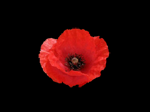In Their Honour - Mapping Anzac Graves

I have spent the last couple of weeks frantically working on a project for Mashups Australia, a competition designed to encourage developers to mashup and cleanup government datasets in useful and inventive ways:
I met Jacqui Kennedy at the first Sydney GTUG meeting and she expressed interest in what I was doing with my World War Two Timeline Project. We started talking and she sucked me into her plans for developing an application for Australians to find their relatives who served, and died, in overseas conflicts. We have talked about lots of ideas for integrating timelines, personal histories and photographs, but our first task was to find records and memorial information for Australians who have served during wartime.
The Mashup Australia competition gave us the perfect spring board for getting motivated on the project. Jacqui tracked down a few sources of data to work with, but found the core data set at the Commonwealth War Graves Commision (CWGC). Given the sensitivity of the information we were presenting, we contacted the CWGC for permission to use their data. Jacqui exchanged several emails with the CWGC, who quite rightfully wanted assurances that their data was not going to be used for commercial purposes or in an inapproriate context.
A week and a half ago, the CWGC gave us permission to proceed and provided us with an excel spreadsheet containing a subset of their data for 102,391 Australian service men and women buried in cemeteries in Australia and around the world. I spent the next week of late nights, writing a collection of python scripts that processed, collated and combined the various data sets we had into two normalized data tables, Soldiers and Cemeteries.
The data isn't perfect, but we have sucessfully combined geocding information with more than half of the data and cross linked it with the data we received from the CWGC. I spent this week implementing a user interface to access this information with a few fundamental goals:
- A sense of gravitas and reverance, consistent with the memorials and cemeteries that we index.
- A streamlined AJAX based user interface to make browsing and searching the lists of names fast and as unobtrusive as possible.
- A minimalist interface, with as few distractions from what we see as the core use case for the system, that is, finding and honouring relatives and friends who have served Australia in wartime.
I am constantly seeing ways we can improve the way the site works, but I think we have made a good start and feel confident and very satisfied with our submission for the Mashup Australia contest.
Permalink - Tags: Development
 Mastadon
Mastadon Feeds
Feeds Contribute
Contribute